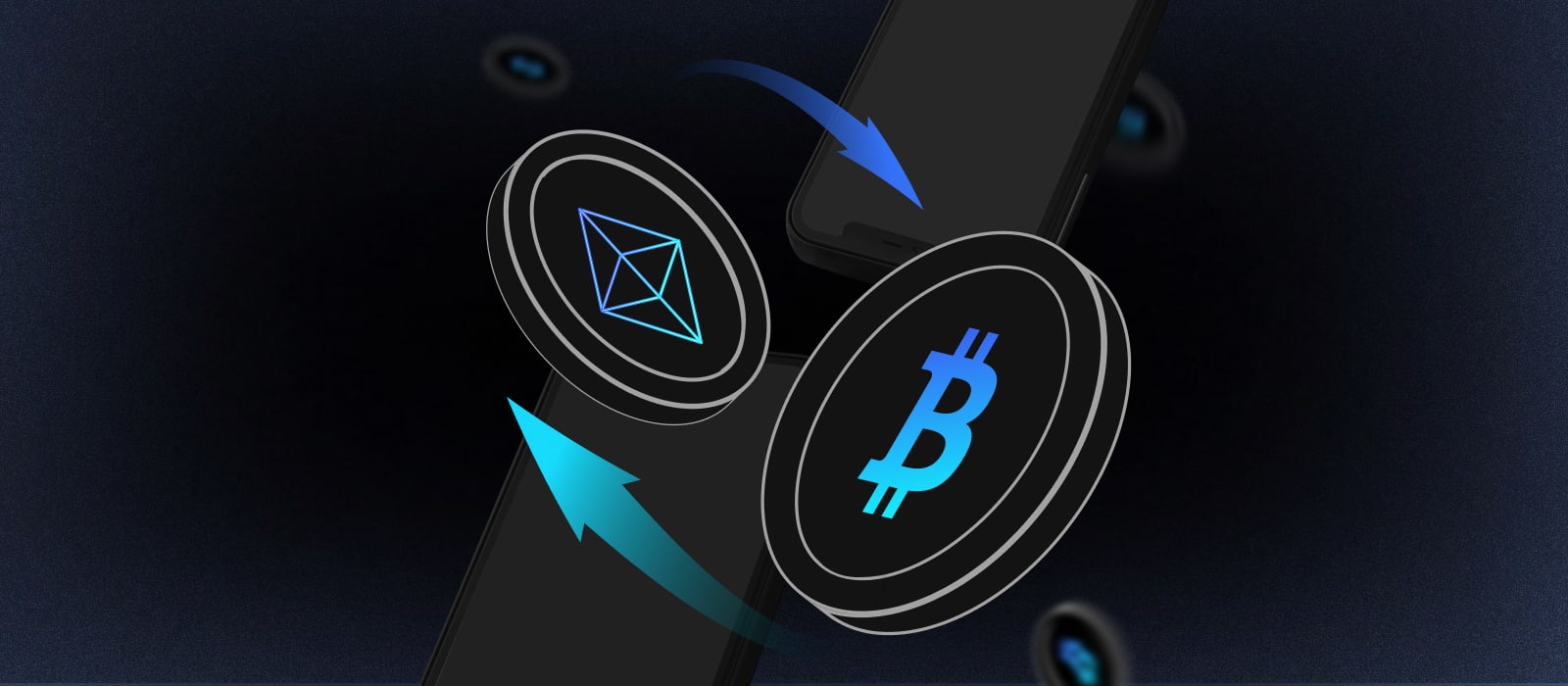As the market for P2P payments is projected to reach astronomical heights, the question remains: How to harness the power of P2P technology to build your own exchange and capitalize on this booming industry?
The peer-to-peer (P2P) model is rapidly becoming a preferred avenue for cryptocurrency trading. Unlike traditional, centralized exchanges, P2P platforms offer greater control to users, often with lower fees and a wider range of payment methods. The popularity of P2P payments has surged in 2024, and this trend is expected to continue. The global market for P2P payments was valued at approximately $2.21 trillion in 2022. It is projected to grow at an average annual rate of 18.10% from 2023 to 2032, reaching around $11.62 trillion by 2032.
This growing demand for user-centric crypto trading has fueled the interest for P2P exchange development. Here at PixelPlex, we’ve been at the forefront of this movement, having successfully built a number of peer-to-peer crypto exchanges including Bitnetwork – a robust platform designed specifically for professional traders.
Leveraging our extensive experience, our blockchain and web3 development firm is here to guide you through the step-by-step process of developing your own P2P crypto exchange solution.
What is peer-to-peer crypto exchange?
A peer-to-peer crypto exchange is a decentralized platform that connects buyers and sellers directly, enabling them to trade cryptocurrencies without the need for intermediaries. Unlike traditional exchanges, P2P decentralized crypto exchange development platforms offer greater flexibility, security, and often lower fees, making them an attractive option for many cryptocurrency traders.
How P2P crypto exchanges work
In the world of P2P DeFi lending, trust is established through reputation systems and smart contracts. Before lending or borrowing funds, users can review the borrower’s or lender’s history, feedback, and creditworthiness.
Consider this scenario: Alice, a small business owner, needs a loan to expand her operations. She lists her loan request on a P2P lending platform. Bob, an investor seeking a higher return than traditional savings accounts, reviews Alice’s profile and decides to lend her the required funds.
A smart contract is automatically generated to facilitate the transaction. It outlines the loan terms, interest rate, repayment schedule, and security measures. Bob transfers the funds to the smart contract, which holds them until Alice meets her obligations. As Alice makes timely repayments, the smart contract gradually releases the funds back to Bob.
In traditional finance, banks act as intermediaries, assessing borrowers’ creditworthiness and managing loan processes.They charge fees for their services and often require collateral. In contrast, P2P lending platforms eliminate the need for intermediaries, reducing costs and potentially offering more favorable terms for both borrowers and lenders.
![]()
What are the benefits of P2P crypto exchanges?
![]()
Enhanced security and privacy
One of the most significant advantages of P2P crypto exchanges is their enhanced security and privacy features. Unlike centralized exchanges, which can be vulnerable to hacking and data breaches, P2P platforms often leverage blockchain technology to ensure the security of transactions and user data. Blockchain statistics show that users adopt it gladly mostly because of the security and integrity over transactions they want to be sure of.
This decentralized approach reduces the risk of single points of failure and provides users with greater peace of mind.
Lower transaction fees
P2P exchanges typically charge lower transaction fees compared to traditional centralized exchanges. By eliminating intermediaries and their associated fees, these platforms offer a more cost-effective solution for both buyers and sellers.This can attract price-sensitive traders and increase the overall volume of transactions on the platform.
Increased liquidity
A well-developed peer-to-peer crypto exchange can attract a diverse user base, leading to increased liquidity. As more buyers and sellers participate on the platform, there is a higher likelihood of finding counterparties for trades, resulting in improved market depth and liquidity. Increased liquidity can enhance the trading experience and attract more users to the platform.
Community building and engagement
P2P crypto exchanges often foster a sense of community among their users. Businesses often develop crypto exchanges as an addition to crypto arbitrage trading tools to can leverage this as good as possible by integrating social features, chat functionalities, and forums on various topics like changes in crypto taxes within the platforms. Building an engaged community can enhance user retention, encourage active participation, and promote a positive brand image.
Expanded market opportunities
By leveraging P2P exchange development, businesses can tap into the growing demand for decentralized trading. P2P exchanges attract users who prefer direct trading, greater control, and autonomy over cryptocurrency transactions. This expands the potential user base and opens up new market opportunities.
What features should you include in your P2P crypto exchange?
In 2024 the volume of P2P transactions reached a record high, indicating growing demand for decentralized trading platforms. To ensure your P2P crypto exchange stands out, our P2P crypto exchange development company has compiled a list of key features that align with current market trends and user expectations.
User interface and user experience
- Intuitive design: A clean, user-friendly interface is crucial for attracting and retaining users. Consider incorporating visual elements, clear navigation, and helpful tooltips to guide users through the platform.
- Mobile optimization: Given the increasing popularity of mobile devices, ensure your P2P exchange is fully optimized for smartphones and tablets. This will enhance accessibility and convenience for users on the go.
- Language support: To reach a global audience, offer support for multiple languages. This will make your exchange more inclusive and accessible to users from diverse backgrounds.
Order matching engine
- Efficient algorithms: Implement advanced algorithms to match buy and sell orders quickly and accurately. This is especially important during periods of high trading volume.
- Price discovery: A robust order matching engine should facilitate price discovery, allowing users to find fair and competitive prices for their trades.
- Order types: Support a variety of order types, such as market orders, limit orders, and stop orders, to cater to different trading strategies and risk tolerances.
Security and trust
- Multi-factor authentication (MFA): Require users to provide multiple forms of identification when logging in to their accounts. This adds an extra layer of security and helps prevent unauthorized access.
- Cold storage: Store a significant portion of your exchange’s funds and wrapped crypto in cold storage, which is offline and physically secure. This minimizes the risk of hacking and theft.
- Transparency: Be transparent about your security measures and audit processes. This builds trust with users and demonstrates your commitment to protecting their funds.
Smart contracts
- Escrow system: Utilize smart contracts to implement an escrow system that automatically holds funds until both parties have fulfilled their obligations. This reduces the risk of fraud and ensures fair transactions.
- Dispute resolution: Leverage smart contract development to automate dispute resolution, ensuring a more efficient and impartial process.
Wallet integration
- Multiple cryptocurrency support: Crypto wallet development will help allow users to trade and store a variety of cryptocurrencies on your platform. This will attract a wider range of users and increase your exchange’s liquidity.
- API integration: Provide a robust API that allows users to connect their external wallets to your exchange. This offers greater flexibility and convenience for users who prefer to manage their funds outside of the platform.
Compliance and regulations
- KYC/AML: Strictly adhere to Know Your Customer (KYC) and Anti-Money Laundering (AML) regulations to prevent illicit activities and comply with legal requirements.
- Regulatory compliance: Stay up-to-date with the latest regulatory developments in your jurisdiction and implement necessary measures to ensure compliance.
Additional features
- Offer margin trading: Allow users to leverage their funds for larger positions to attract experienced traders. However, this feature comes with inherent risks, such as liquidation, funding rate, and price volatility. Therefore, this function should be offered with caution.
- Provide staking and lending: Provide opportunities for users to earn rewards by staking their cryptocurrencies or lending them to others to increase user engagement and generate additional revenue for the exchange.
- Integrate P2P marketplace: A P2P marketplace can facilitate direct trades between users, offering a more personalized experience. You can integrate AI in crypto recommendation features to help users with navigation and choices.
- Clarify the fee structure: Implement a fair and transparent fee structure that aligns with industry standards. Consider offering discounts for high-volume traders or specific trading pairs.
Leverage enterprise blockchain development – consult with our experts first
P2P crypto exchange development step-by-step
![]()
Step 1: Define your target audience, conduct market analysis
When embarking on the journey of P2P crypto exchange development, understanding your target audience is paramount. While novice traders may require a more intuitive interface with fewer trading pairs to gradually familiarize themselves with the crypto world, professional traders demand sophisticated features such as advanced charting tools and a wide range of trading pairs.
To effectively meet the needs of your target audience, conducting a thorough market analysis is essential. This involves:
- Identifying competitors
- Analyzing their strengths and weaknesses
- Understanding the prevailing market trends
Step 2: Choose the blockchain platform and cryptocurrencies
Selecting an appropriate blockchain platform is a critical decision in P2P crypto exchange development. Factors to consider include:
- Scalability: The platform should be capable of handling a large number of transactions without compromising speed or performance.
- Security: Robust security measures are essential to protect user funds and prevent hacking attempts.
- Community and ecosystem: A strong community and ecosystem can provide valuable support and resources.
Popular blockchain platforms for P2P crypto exchanges include:
- Ethereum: A versatile platform that supports smart contracts and decentralized applications (dApps).
- Polygon: A scalable platform that aims to address Ethereum’s scalability limitations, making it suitable for P2P exchanges that require high transaction throughput.
- Binance Smart Chain: A high-performance blockchain designed for trading and DeFi.
When choosing cryptocurrencies to list on your exchange, consider factors such as:
- Market capitalization: The total value of a cryptocurrency circulating supply.
- Trading volume: The amount of a cryptocurrency traded over a specific period.
- Community and development activity: A strong community and active development team can indicate a cryptocurrency’s potential for growth.
Step 3: Design the architecture of your P2P crypto exchange
The architecture of your P2P crypto exchange should be designed to facilitate efficient and secure peer-to-peer transactions. Enable direct transactions between users through smart contract development or atomic swaps.
Furthermore, when designing the architecture of your P2P crypto exchange, it’s essential to prioritize scalability. Ensure the system can handle increasing transaction volumes efficiently, maintaining low latency and minimal fees.
Step 4: Develop backend logic and add required integrations
The backend logic of your P2P crypto exchange should handle tasks such as:
- Transaction processing
- Order matching
- Wallet management
- Cryptocurrency payment gateway development
Step 5: Conduct thorough testing
Thorough testing is essential to ensure the functionality and security of your P2P crypto exchange. Conduct various types of testing, including:
- Unit testing: Testing individual components of the code.
- Integration testing: Testing how different components interact with each other.
- Security testing: Testing for vulnerabilities and security weaknesses.
- User acceptance testing (UAT): Testing the exchange from the perspective of end-users.
Step 6: Develop a go-to-market strategy
A well-crafted go-to-market strategy is crucial for attracting users and building a successful P2P crypto exchange. Consider factors such as:
- Marketing and branding: Develop a strong brand identity and effective marketing campaigns.
- Community building: Engage with the crypto community through social media, forums, and events.
- Partnerships: Partner with other businesses in the crypto industry to expand your reach.
- Listing fees: Determine your fee structure for listing new cryptocurrencies.
Step 7: Launch and maintain your peer-to-peer crypto exchange
After launching your P2P crypto exchange, continuously monitor its performance and gather feedback from users. Make necessary adjustments and improvements based on user insights.
To ensure long-term success in centralized crypto exchange development, stay updated on industry trends, technological advancements, and regulatory changes. Continuously invest in security, scalability, and user experience to maintain a competitive edge in the dynamic crypto market.
How much does it cost to develop a P2P crypto exchange?
The cost of developing a peer-to-peer crypto exchange typically ranges from $200,000 to $800,000, depending on several factors:
- The complexity of the P2P architecture, including features like escrow services and decentralized order matching.
- Integrations with multiple blockchain networks (e.g., Ethereum, Binance Smart Chain, Polygon) to support various cryptocurrencies and tokens.
- Custom features such as dispute resolution systems, user rating mechanisms, and multi-signature wallets.
- Integration of advanced security measures, including DDoS protection, encryption, and regular vulnerability assessments.
P2P crypto exchange real-life examples by PixelPlex
A high-performance exchange for professional traders
Imagine a platform built by traders, for traders. PixelPlex’s solution for professional users prioritizes speed, security, and advanced features. This translates to real-world benefits:
- Lightning-fast transactions: Every millisecond counts in the fast-paced world of crypto. Bitnetwork leverages cutting-edge technology to ensure near-instantaneous order execution. This is crucial for professional traders who capitalize on short-term market movements.
- Advanced order types: Beyond simple buy and sell orders, professional traders rely on sophisticated tools to manage risk and maximize gains. Bitnetwork caters to this need by offering 2 order types, including limit and market orders, and 20 trading modules with 18 trading pairs.
- Unparalleled security: When dealing with significant sums of money, security is paramount. Our platform prioritizes user safety with three types of 2-factor authentication, and advanced security protocols.
A beginner-friendly exchange for new entrants
Our client sought a beginner-friendly solution, leading us to develop FanShape, a simple and intuitive platform. FunShape for novice traders simplifies the process, making it accessible and encouraging:
- Intuitive interface: A complex interface can be a major barrier to entry for new users. Therefore, we created a user-friendly design with clear instructions and easy navigation. This eliminates the frustration often associated with traditional exchanges, making it easier for beginners to take their first steps into the crypto market.
- Educational resources: Learning the ropes of cryptocurrency can be overwhelming. We integrated educational resources directly into their platform. This includes a support section and live chat.
- Simplified trading options: FunShape offers market and limit types of order with 10 trading pairs, focusing on the most essential functions. This avoids overwhelming new users with complex features they might not yet understand. As they gain experience, users can graduate to more advanced options on the platform.
Automating profits with a crypto arbitrage platform
For our client we developed a platform that utilizes standard 3- and 4-way arbitrage mechanisms to exploit price discrepancies across multiple crypto exchanges. With no restrictions on the number of trades, users can simultaneously trade various cryptocurrency pairs on several platforms.
Integration with leading exchanges: To maximize trading opportunities, we’ve integrated our arbitrage bot with five prominent crypto exchanges: Kraken, Binance, Bittrex, Bitfinex, and Coinbase. These platforms support hundreds of currencies and tokens, providing a diverse trading environment.
High-speed order book analysis: The bot is designed to process order book updates in real-time, ensuring rapid analysis of potential trades. By evaluating dozens of opportunities per second, it identifies and executes only profitable arbitrage transactions.
Blockchain in Payment Services: Trends, Technologies, and Development Best Practices
Canton Network Wallet Development: A Guide on How to Do It Right (and What It'll Cost You)
Current trends in P2P crypto exchange development
![]()
The landscape of peer-to-peer cryptocurrency exchanges is undergoing a rapid evolution, driven by technological advancements, regulatory shifts, and evolving user preferences. As the industry matures, several key trends are emerging that will shape the future of P2P trading.
Increased regulatory сompliance
One of the most significant trends is the growing emphasis on regulatory compliance. As P2P exchanges gain mainstream adoption, governments worldwide are introducing regulations to protect consumers and prevent illicit activities. This has led to a surge in compliance initiatives, including KYC verification, AML measures, and adherence to local laws and regulations.
Integration of AI and ML
AI is being leveraged to improve fraud detection, risk management, and customer support. Machine learning algorithms can analyze vast amounts of data to identify patterns and anomalies, enabling proactive risk mitigation.
Tokenization of assets
Asset tokenization, the process of converting real-world assets into digital tokens, is gaining traction in the P2P exchange space. By tokenizing assets such as real estate, commodities, and even art, P2P exchanges can offer a broader range of investment opportunities to their users. Tokenization platform development services can also increase liquidity, fractionalize ownership, and democratize access to previously illiquid assets.
Cross-chain compatibility
As the number of blockchain networks continues to grow, interoperability has become a major challenge. To address this, P2P exchanges are exploring cross-chain compatibility solutions. This involves building bridges or protocols that allow seamless transactions and asset transfers between different blockchains. By enabling cross-chain compatibility, P2P exchanges can provide users with more flexibility and choice.
Community governance
As P2P exchanges become more decentralized, community governance is gaining prominence. This involves giving users a say in the decision-making process through voting and other democratic mechanisms. By empowering the community, P2P exchanges can foster a sense of ownership and encourage active participation.
Automated liquidity provision
Liquidity is essential for the efficient functioning of any market. Automated liquidity provision mechanisms, such as automated market makers (AMMs), can help to ensure that there is always sufficient liquidity available for trading. These systems dynamically adjust liquidity pools based on market conditions, providing a more stable and predictable trading experience.
To wrap it up
As user demand for decentralized trading continues to grow, building a robust and user-friendly P2P platform offers a promising opportunity for businesses and entrepreneurs.
With our expertise in blockchain consulting and custom blockchain development, PixelPlex can help you navigate the complexities of creating a successful product. Whether you’re a seasoned trader seeking a high-performance platform or a newcomer taking your first steps into the crypto world, we’ll develop a tailored crypto payment solution for your specific needs.
Our white-label crypto exchange development company will empower you to take control of your crypto journey, from making your first trade to capitalizing on advanced market opportunities. Contact us to share your ideas!




